Top Ho Chi Minh City Tourist Attractions
We’ve all been there. We have all been a TOURIST at some point. While I loathe the idea of being targeted as a tourist anywhere, unfortunately in Vietnam, this association is inevitable. I stick out like a sore thumb. Fortunately, however, the locals are very welcoming and willing to accept my broken Vietnamese and frantic hand gestures. I have learned that being a tourist is not always bad. In Vietnam, I have been told on numerous occasions that many Vietnamese people are glad American students a) want to study their history and culture and b) help fuel the cultural tourism economically.
Grab your fanny packs and digital cameras. These are the top HCMC tourist attractions I have discovered:
Reunification Palace
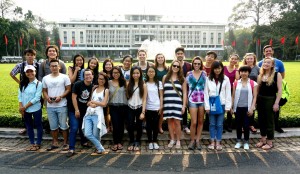
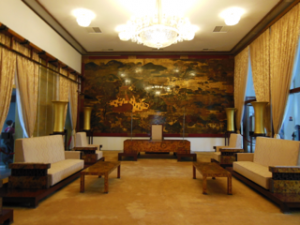
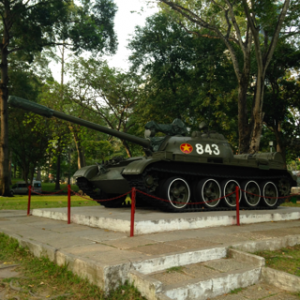 This building is directly associated with the fall of Saigon in 1975. On April 30, 1975, communist tanks arrived in Saigon – barreling through the iron gates surrounding the palace. Many photojournalists captured this event. From the footage I have seen, everything has remained in tact, as though nothing has changed.
This building is directly associated with the fall of Saigon in 1975. On April 30, 1975, communist tanks arrived in Saigon – barreling through the iron gates surrounding the palace. Many photojournalists captured this event. From the footage I have seen, everything has remained in tact, as though nothing has changed.
This building was home of the South Vietnamese president and the central location for wartime efforts. The palace includes familiar items but it is odd to see them all in one place such as the following: tanks, palm trees, a bamboo-like facade, a helicopter, and a serious war bunker.
Ben Thanh Market
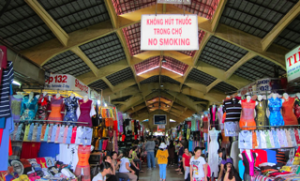
A classic tourist attraction. This market stands in a French-style architectural building in the heart of District 1. Be prepared for tight spaces, potential wallet/purse nabs, and bargaining your price. Not my favorite. Saigon Square is nearby (only a 5-10 minute walk) and offers the same experience but less overwhelming.
Rooftop Bar
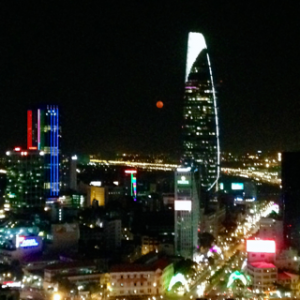
You really should go to a Saigon rooftop bar, especially at sunset – at the golden hour. This is a glorious time of day to see the city. Drinks are more pricey so it’s better to hit a rooftop bar at happy hour (usually between 5:00pm – 8:00pm). Be warned that dress codes are common. No open-toed shoes. No tank tops for men.
OMG! Bar has both indoor and outdoor seating with a relaxed vibe. The outdoor seating area is limited, but you can’t go wrong with either inside or out.
Chill Sky Bar is my favorite – with its panoramic view of the city and delicious drinks. There is indoor and outdoor seating, but the outdoor seating area is much larger than OMG! and must see!
Bui Vien
You should spend at least one night walking along Bui Vien street (also known as the “Backpacker District” due to all of the backpacker tourists who visit this street). Similar to Bourbon St. in New Orleans, one visit is enough. Drinking, Fire eaters, Michael Jackson impersonators, “massages”, and even drug paraphernalia occurs on this street. I am actually not a fan of this street because it is a tourist oasis – providing a bubble for all tourists to partake in familiar, Western behavior that is unlike typical Vietnamese culture. While this street helps increase tourism, the exploitative behavior is not true to Vietnam.
Walk Along the Water
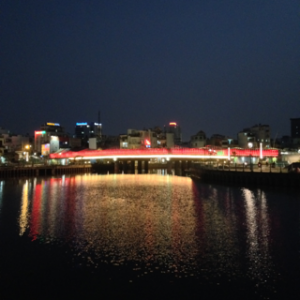
Take your pick – either the Saigon River or a canal. My favorite is Kênh Nhiêu Lộc – Thị Nghè near Phu Ngang district. I love seeing the restaurants and homes tucked into the river bend. Strolling along a river or canal reminds me of Paris–there’s something so magical and serene about an evening stroll along French canals. And, equally so in Saigon.
Saigon Notre Dame Cathedral
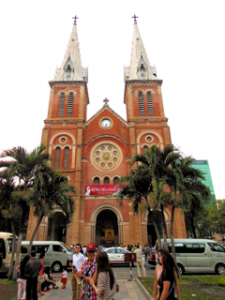
I learned that French influence is more prominent in the southern region of Vietnam because they were allies with the South during wartime with the Northern communist region. Only 8% of the Vietnamese population are Catholic, yet it is interesting to see how long lasting French colonialism has lasted and in small ways.
Post Office 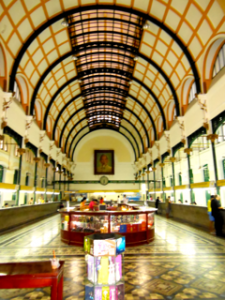
(directly across the street from Saigon Notre Dame)
War Remnants Museum
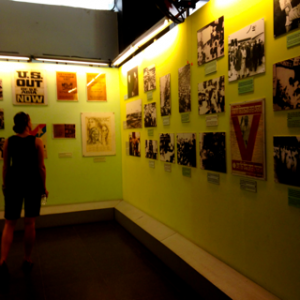 Most of the American students in the program agreed that our knowledge of the Vietnam War was very limited. More often, high school history classes teach specific dates and players but very rarely understand how American soldiers were affected or even how the Vietnamese were affected. I feel fortunate to have a Vietnam War section in my senior Honors English class. We studied war photographs and read American solider perspectives for a better understanding of what occurred. While I learned how Americans were affected, I only learned a glimpse of how the Vietnamese were affected. For example, no textbook will discuss the inhumane torture techniques in American prisons. (If you are interested, research “tiger cages”). This museum depicts the war’s affects on the Vietnamese.
Most of the American students in the program agreed that our knowledge of the Vietnam War was very limited. More often, high school history classes teach specific dates and players but very rarely understand how American soldiers were affected or even how the Vietnamese were affected. I feel fortunate to have a Vietnam War section in my senior Honors English class. We studied war photographs and read American solider perspectives for a better understanding of what occurred. While I learned how Americans were affected, I only learned a glimpse of how the Vietnamese were affected. For example, no textbook will discuss the inhumane torture techniques in American prisons. (If you are interested, research “tiger cages”). This museum depicts the war’s affects on the Vietnamese.
The Vietnam War is the most documented war due to photographs, live broadcast footage, and increased war journalism activity. While this is the most documented war, The Vietnam War, to date, seems to be the least understood war – many questions to date have still gone unanswered both by American citizens and Vietnamese alike.
The museum dedicates a section to the worldwide protests against the war, including American citizen’s protests. Otherwise, the exhibits are fairly one-sided and can be very uncomfortable for Americans.
In the end, I am grateful for this experience because it helps me to understand more about the past and to appreciate this unique study abroad opportunity in Vietnam.
Beyond Tourist Attractions
I recommend experiencing the tourist attractions but also taking the time to do uncomfortable things. I have learned that hidden gems are worth feeling totally vulnerable while not knowing where to go or only being able to communicate very minimally with locals. It is impossible to really understand a place or culture without some sense of uncertainty. We must struggle first in order to grow.